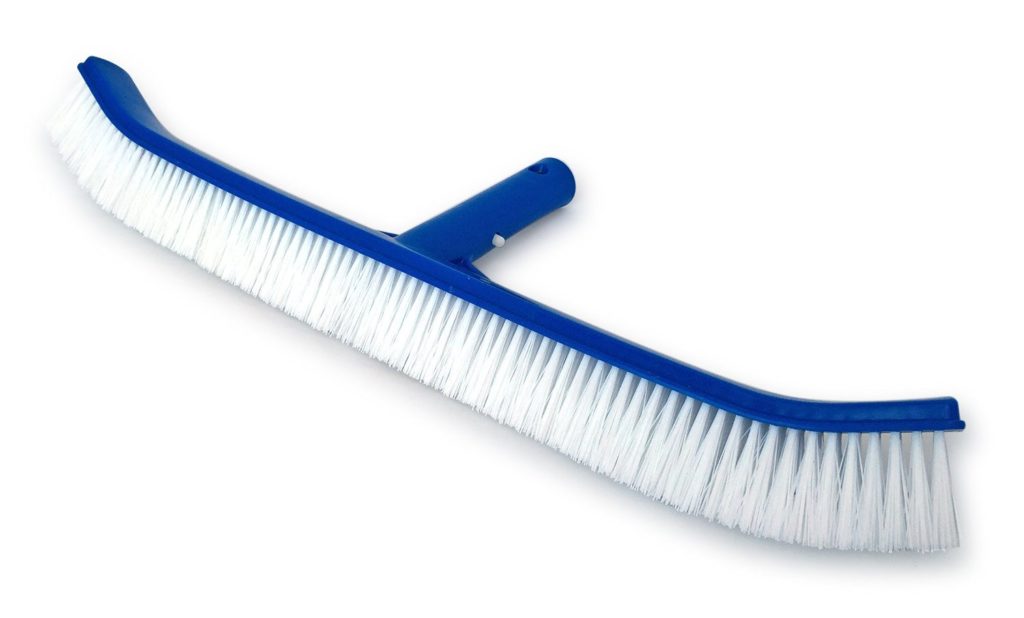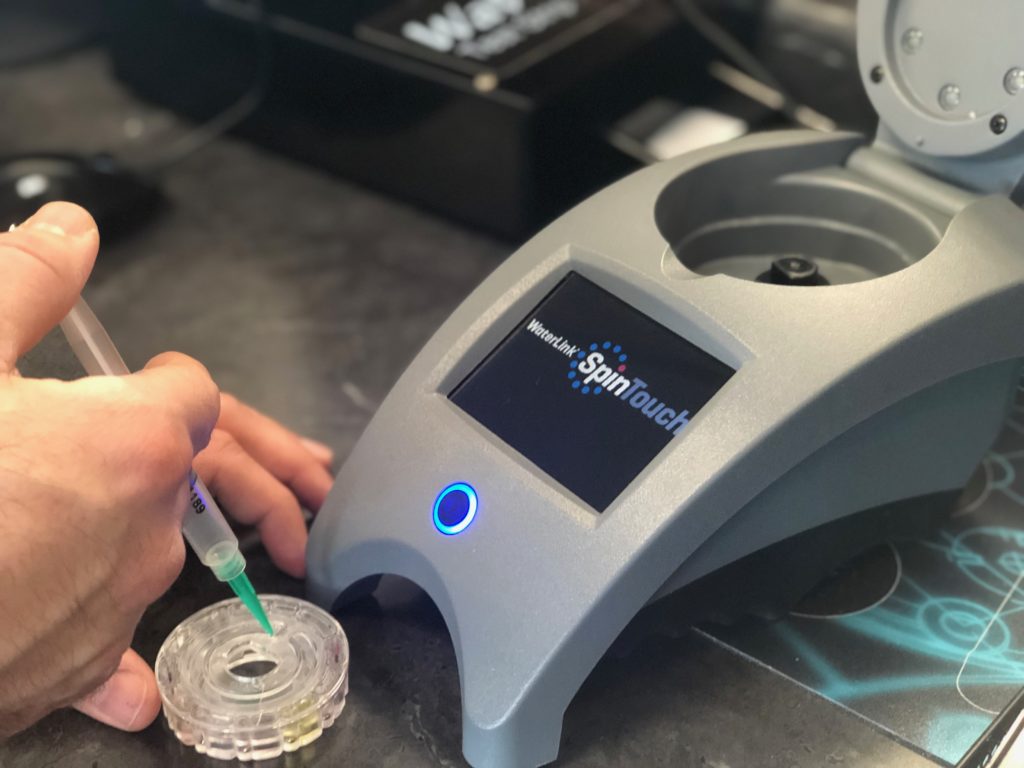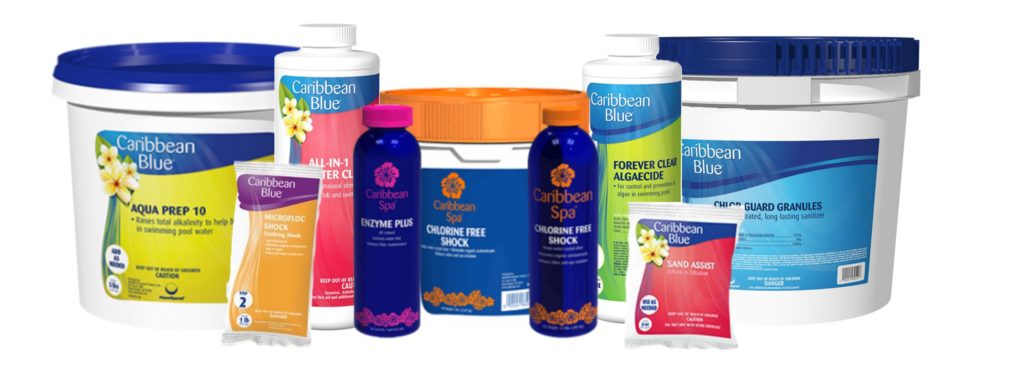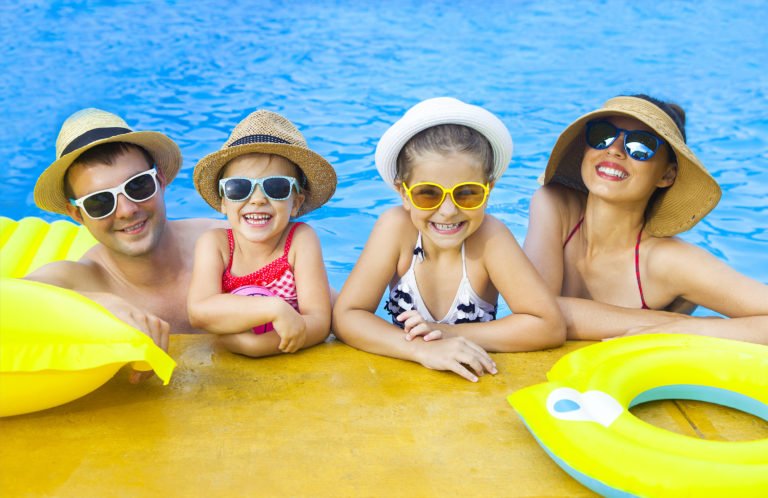Keep Your Family Safe and Healthy
We Are Here to Help | 5.8.2019
A secret most new swimming pool owners don’t realize when purchasing their new investment is the importance of the pool water chemistry. Most think, ‘I don’t treat my bathtub with chemicals and I use that daily!” which is true however, you don’t take a bath in the same water that a group of people also took a bath in for 20 years (ew!) The main steps to keeping pool water safe and healthy for your family are Filtration, Circulation, Cleaning, and Balancing. By following these four steps you can guarantee your family will be able to enjoy your pool for many years to come.
Filtration-
Filtering the water is more than making a whirl pool to get the dirt to go in the middle of the pool (I know you have all done it!) Your pool needs an average of 1-2 water turnovers per day which means the entire water capacity of your pool needs to go through your filter in the amount of time you keep your filter on. You can check on this by finding out how many gallons of water your pool holds then looking at the gallons per hour or GPH rating on your filtering system. It is recommended to leave your filter on a minimum of 12 hours a day but again check your filter system GPH to make sure your water is being fully filtered at least 1-2 times a day. Once you figure out what the best amount of time is to leave your filter on, do yourself a favor and purchase an automatic timer. Automatic filter timers give you the peace of mind that the filter will run every day without you remembering to turn it on. Valley Pool & Spa has a stock of automatic timers and can also help you figure out the GPH of your filtering system!
Circulation-
This might sound redundant because you have the filter on but there’s a secret to circulation. In order to keep the pool clean you want to point your return (that jet that shoots water into the pool) toward the floor of your pool and away from your skimmer. Pointing the return in this direction helps the pool push all water and dirt around to the skimmer without creating major dead spots in the pool. (We’ll get to that next…) Having your filter on for a minimum of 12 hours a day helps circulate the water to keep bacteria, algae, and bio-film from forming in the pool. You want to make sure there is a strong pressure of water coming from the return as well. If the water out of your return is not coming out at a high pressure you may need to check some things with your filter.
-
Chemically clean your filter, Valley Pool & Spa can give you FREE step by step instructions on how to clean YOUR filter! Sometimes when the filter is not clean the water can not push through at a good pressure to circulate your pool water and your pump works overtime to get the water through to the other side (Overworked pumps are not a pool’s friend.)
-
If you have an D.E. or Earth Filter you may have not added enough D.E., it sounds wrong but believe it or not, if you do not have the correct amount of diatomaceous earth in your filter it will run slower. (Crazy, huh?)
-
Check your skimmer basket to make sure it is empty. Leaves and debris could clog the basket and keep water from getting to the pump.
-
Check the pump basket to make sure it is empty. Sometimes a stick or bugs will get past your basket during vacuuming and get stuck in the pump basket. Be sure all debris is cleared.
-
If you have a sand filter, change your sand annually to avoid tunneling. Tunneling is when water creates paths through the sand (kind of like an ant farm) to take the easiest route out of the filter. This will happen if the sand is left out all winter and never chemically cleaned.


Cleaning-
I shouldn’t have to say this but you have to clean your pool, and I don’t mean just scoop the bugs out. It is not self-cleaning like we all wish our houses were. You must chemically clean the filter at least twice a season. The liner also needs to be cleaned. Grab a wall brush and scrub the walls and floor weekly (this is an awesome job for the kids!) Brushing down the liner, fiberglass, or concrete will eliminate any algae growth and bio-film, that slimy clear film that may get on your pool walls and floor. Another great place where dirt tends to congregate is in the skimmer, you may notice a gross black “bathtub” ring which will need cleaned off. NEVER use household cleaners in a swimming pool or hot tub. There are specially made pH neutral cleaners for pools like Caribbean Blue Surface Clean or Bioguard Off the Wall Cleaner, household cleaners can contain phosphates or ammonia which block pool sanitizers from doing their job in the pool. Use a special pool cleaner wherever you need to, in or around the pool. You will also want to give those toys and rafts a nice scrub every once in a while. Valley Pool & Spa sells Mytee Mitts and Mytee Feet which are awesome scrubbing mitts for hands and feet so you can clean while you’re in the pool. (the kids will love it!)
Balancing-
I don’t mean stand on your head. Balance the pool chemistry with your pool chemicals. Pool chemicals are all not created equal (sad but true) so before putting anything into your pool read the label on the bottle or bucket and always adhere to any safety warnings. In order to have the most comfortable, clean, fresh, and healthy pool water you want to balance the sanitizer, oxidizer, pH, alkalinity, calcium, and stabilizer. (Don’t worry it’s not as hard as it sounds!) Your easiest way to do all of this is to grab a sanitized bottle or jar and dip your arm into your pool until you’re about elbow deep and get at least a 12oz sample of your pool water, then drive to Valley Pool & Spa and have your water tested! Easy, right?! For those of you that want to do it the hard way here are the reasons behind why we should balance all the levels of what I listed above.


-
Sanitizer- Chlorine, Bromine, or Biguanides are the sanitizers that “clean” your pool water and kill bacteria. The proper level of sanitizer in pool water keeps your family healthy and avoid things like diarrhea, folliculitis, and pink eye (ew again!). Look at the label to determine what level of sanitizer should be in your water…. or you could ask the experts at Valley Pool & Spa. (just sayin’)
-
Oxidizer- (aka Shock) It is a misconception that shocking your water is killing bacteria, the truth is oxidizing the water puts oxygen into the water clearing any molecules that could be weighing the sanitizer down. Weighed down sanitizer is lazy and doesn’t want to clean anything. (kind of like me after work, right?) Pool water should be maintained with a weekly shock however when there is more action in your pool such as a party or thunderstorm or the kids let the dog swim around in the water, you will want to shock the pool right after all the commotion dies down. This will help keep your sanitizer working properly which in turn will keep the water safe.
-
pH- Depending on where you live and what type of water you are using pH can start out at very wide range. The ideal pH in a swimming pool is 7.4ppm which is neutral, not basic or acidic. It happens to also be the pH in our tears which is why the water feels comfortable when the pH is regulated. Follow the instructions on the bottle for pH increaser or decreaser to get your pH level to a comfortable 7.4 ppm.
-
Alkalinity- Ahh, the misunderstood big sister of pH. The ideal alkalinity level may depend on the type of sanitizer you use so consult the label or your Valley Pool & Spa chemical specialist for help. Alkalinity buffers the pH keeping it from going up and down drastically from any type of change in the water. Kind of a big sister to pH if Alkalinity is at the right level then pH will be at the right level (instead of running around Target in the clothes racks!) Always balance the alkalinity levels first before balancing pH, alkalinity can naturally raise the pH level so this avoids overshooting the 7.4ppm of the pH level.
-
Calcium- Important to balance but not as frequent as the other four chemical levels. Calcium will stay at a good level until the water gets cold which is why you want to pay special attention in the spring when you open and the fall when you close the pool. Once balanced at pool opening time, calcium stays unless there is a huge amount of water added to the pool. To find out what your calcium level needs to be take a look at your sanitizer label and calcium label or go to Valley Pool & Spa (I sound like a broken record now).
-
Stabilizer- Last but not least. Stabilizer is exactly what it sounds like, it stabilizes the sanitizer keeping it in the pool and not getting removed by the sun’s UV rays. Kind of like a sunscreen for your sanitizer. Indoor pools and hot tubs normally don’t use this chemical because they don’t see the light of day, literally. There’s a catch to stabilizer. You will want the correct level without going over. Overdosing the pool water with stabilizer can have an adverse effect on the sanitizer creating issues with balancing the water. Pay attention to what chemicals contain stabilizer in them. It is very rare when a pool needs stabilizer mid season unless it is a salt pool which requires balancing the stabilizer levels often.
Moral of the story, go to Valley Pool & Spa with your pool water sample where they will test your water and print out the recipe to keep your pool safe and healthy for your family…for FREE!
Have a safe and happy summer!
Kristin

